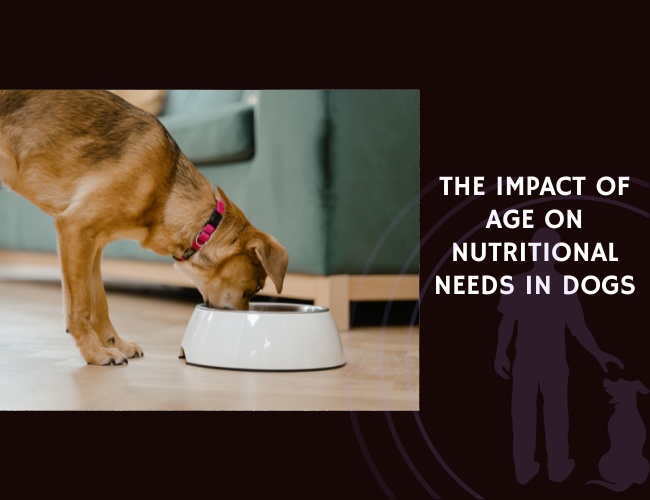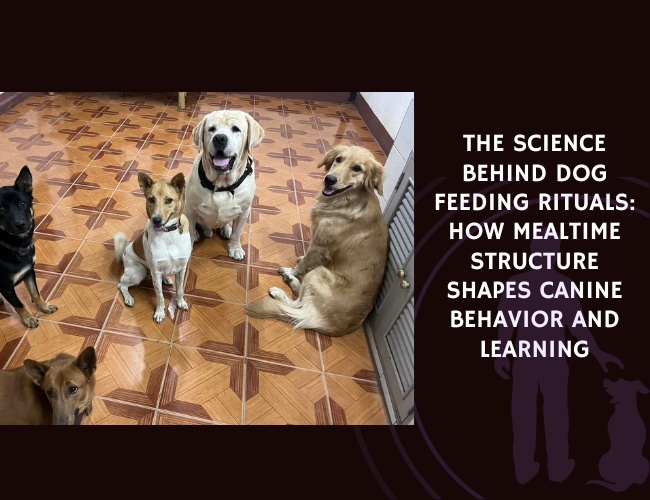Introduction to Canine Life Stages
Dogs, much like humans, go through various life stages that significantly impact their nutritional needs and overall health. Understanding these different stages can help dog owners provide the best care tailored to their canine companions’ specific requirements. This chapter delves into the four primary life stages: puppy, young adult, senior, and geriatric, examining how age influences nutritional needs and metabolism and the importance of adjusting diets accordingly.
The Four Main Life Stages in Dogs
Puppy (0-1 year)
Puppies are in a phase of rapid growth and development, which makes their nutritional needs unique and demanding. These needs include higher protein and fat intake to support their fast-paced growth, development of muscles, and abundant energy levels. Additionally, ensuring proper calcium-phosphorus ratios is essential to support healthy bone development and prevent future orthopedic issues.
Young Adult (1-7 years)
When dogs transition into young adulthood, their growth slows down, and they enter a maintenance phase. This stage requires a well-balanced diet that provides sufficient nutrition to sustain their daily activity levels. Although their protein and fat needs stabilize, adjusting portions based on activity level and metabolism becomes crucial to prevent obesity or under-nourishment.
Senior (7+ years)
Senior dogs experience metabolic changes and reduced caloric requirements as their activity levels generally decrease. However, they still need increased protein for muscle maintenance and supplemental nutrients to support joint health and mobility. A focus on lower calorie intake, while maintaining proper nutrient ratios, helps manage weight and promotes overall well-being in their later years.
Geriatric (Varies by Breed)
Geriatric dogs, often the very senior counterparts, face more pronounced age-related health conditions, requiring diets tailored to their specific needs. Easily digestible ingredients and antioxidant supplementation become vital to support their cellular health and manage chronic issues more effectively. Proper diet adjustments can significantly improve their quality of life and help manage age-associated ailments.
How Age Affects Nutritional Requirements and Metabolism
Age plays a pivotal role in determining a dog’s nutritional needs, as each life stage brings unique physiological changes that influence dietary requirements. Puppies, for instance, are in a rapid growth phase, necessitating higher protein and fat intake to support muscle development and energy demands. As dogs transition into young adulthood, their metabolism stabilizes, requiring a balanced diet that maintains their health and activity levels without promoting obesity.
Senior and geriatric dogs experience a decline in metabolic rate and activity, leading to reduced caloric needs. However, they still require increased protein to preserve muscle mass and supplemental nutrients to support joint health. Adjusting their diet to include easily digestible ingredients and antioxidants can help manage age-related health issues, ensuring that older dogs maintain a good quality of life. Understanding how age affects a dog is crucial for tailoring their diet to meet these evolving nutritional needs effectively.
The Importance of Adjusting Diet According to Life Stage
Each canine life stage has its own set of specific nutritional requirements that shift as they mature and age. Recognizing these needs and adjusting their diet accordingly is critical for their health and longevity. Failure to provide age-appropriate nutrition can lead to developmental issues in puppies, obesity or malnutrition in young adults, and exacerbation of health issues in seniors and geriatric dogs.
Appropriate dietary adjustments ensure that dogs receive the right nutrients at the right time, supporting their growth, vitality, and overall health at any age. By tailoring the diet to the life stage, dog owners can effectively prevent potential health problems, promote better quality of life, and ensure that their pets thrive throughout their lives.
As dogs navigate through their life stages, fine-tuning their diet in response to their changing needs can make a significant difference in their health and happiness.
Does Age Matter on Dog Food?
Age is a critical factor when selecting the appropriate dog food, as it directly influences the nutritional needs of your canine companion. Puppies, adults, and senior dogs each have distinct dietary requirements that reflect their growth stages, energy levels, and health considerations. For instance, puppy food is formulated to support rapid growth and development, providing higher levels of protein, fat, and essential nutrients. In contrast, adult dog food focuses on maintaining health and activity levels, offering a balanced diet that prevents obesity and supports daily energy needs.
As dogs transition into their senior years, their metabolism slows down, and their caloric needs decrease. Senior dog food is designed to accommodate these changes by providing fewer calories while still ensuring adequate protein intake for muscle maintenance. Additionally, senior diets often include supplements like glucosamine and omega-3 fatty acids to support joint health and mobility. Therefore, choosing age-appropriate dog food is crucial for meeting the specific nutritional demands at each life stage, promoting overall health and longevity.
Understanding the impact of age on nutritional needs allows dog owners to make informed decisions about their pet’s diet. By selecting food tailored to their dog’s current life stage, owners can help prevent potential health issues and ensure their pets receive the necessary nutrients to thrive. Regular consultations with a veterinarian can further guide dietary choices, ensuring that any adjustments align with the dog’s evolving health requirements.
Puppy Nutrition (0-1 year)
Higher Protein and Fat Requirements
Puppies undergo rapid growth and development during their first year of life, which significantly impacts their nutritional needs. To support this intense growth and development phase, puppies require higher levels of protein and fat compared to adult dogs. Protein is essential for muscle development, cell regeneration, and overall body growth, while fat is crucial for providing the necessary energy for active, playful puppies.
Specific Calcium-Phosphorus Ratios
Balanced calcium and phosphorus levels are critical for the development of strong bones and teeth in puppies. An imbalance in these minerals can lead to skeletal deformities and other orthopedic issues. The ideal calcium-to-phosphorus ratio for puppies is generally considered to be between 1.2:1 and 1.4:1. This ratio ensures that the growing puppy’s bones develop properly, reducing the risk of conditions such as rickets or joint problems later in life.
Frequency and Portion Considerations
Feeding frequency and portion control are vital aspects of puppy nutrition. During the first few months, puppies should be fed three to four times a day. This frequent feeding schedule helps to maintain steady energy levels and prevents hypoglycemia, a condition of low blood sugar that puppies are particularly prone to.
Adjusting Portions
As puppies grow, their portion sizes should be adjusted to reflect their increasing energy needs. Puppy feeding guidelines typically recommend the following:
- 0-3 months: Three to four small meals per day.
- 3-6 months: Two to three meals per day.
- 6-12 months: Two meals per day.
Always consult with a veterinarian to confirm the appropriate portion sizes and feeding frequency for your specific puppy, as individual needs can vary based on breed, size, and activity level.
Adjustments should also be made for the puppy’s metabolic rate and physical activity. More active puppies may require a higher caloric intake, while less active puppies may necessitate calorie control to avoid excess weight gain, which can put undue stress on developing bones and joints.
Gradual Food Transitions
When transitioning between foods or adjusting from one feeding schedule to another, it is important to do so gradually. A sudden change in diet can lead to gastrointestinal upset such as diarrhea or vomiting. Transition over the course of 7-10 days by gradually mixing increasing amounts of the new food with decreasing amounts of the old food.
Understanding these foundational aspects of puppy nutrition will ensure that your growing dog has a strong start in life, setting the stage for ongoing health and well-being.
Transitioning from puppy food to young adult food comes with its own set of guidelines and considerations.
Young Adult Dietary Needs (1-7 years)
Balanced Nutrition for Maintenance and Activity Levels
When dogs transition from puppyhood to young adulthood, their nutritional needs shift from rapid growth to maintenance and activity support. Providing a balanced diet during this life stage is crucial for sustaining their health, energy, and overall well-being. A well-formulated adult dog diet should include optimal levels of protein, fat, carbohydrates, vitamins, and minerals.
Protein and Fat Requirements for Adult Maintenance
Protein remains a vital component during adulthood, although the amounts are adjusted from those required during puppyhood. Protein should comprise approximately 18-25% of a young adult dog’s diet, depending on the dog’s size, breed, and activity level. Quality protein sources, such as chicken, beef, fish, and eggs, are essential for muscle maintenance, tissue repair, and overall body function.
Fat is another significant nutrient that supports energy levels, promotes healthy skin and coat, and aids in the absorption of fat-soluble vitamins. Young adult dogs typically benefit from a fat content of around 10-15% in their diet. Sources of healthy fats include fish oil, flaxseed oil, and chicken fat. These fats provide essential fatty acids like Omega-3 and Omega-6, crucial for maintaining cellular health and supporting a robust immune system.
Adjusting Portions Based on Activity Level and Metabolism
The calorie needs of young adult dogs vary widely based on their size, breed, metabolism, and activity levels. Active dogs that engage in regular exercise, play, and work may require more calories to fuel their activities compared to more sedentary dogs. Dog owners should monitor their pet’s body condition and adjust portion sizes accordingly to maintain an ideal weight.
Assessing body condition through visual observation and hands-on evaluation is a practical method to determine if a dog is receiving the correct amount of food. Factors such as a defined waist, palpable ribs without excess fat, and an overall fit appearance indicate a healthy weight.
Regularly checking these indicators and adjusting meal portions helps prevent obesity or underweight issues, both of which can lead to health complications. For instance, more active breeds like Border Collies or Labrador Retrievers may need larger portions, while less active breeds or individuals may require smaller meals.
As dogs age, their metabolism can slow down, which may necessitate further adjustments to their diet. Regular veterinary check-ups and consultations enable personalized dietary guidance that aligns with the dog’s evolving needs.
By providing balanced nutrition, monitoring and adjusting portions based on lifestyle and metabolism, and prioritizing high-quality protein and fat sources, dog owners can ensure their young adult dogs lead healthy, active, and fulfilling lives. Transitioning smoothly into their next life stage will require continued attentive care and dietary adjustments tailored to their changing needs.
Senior Dog Nutrition (7+ years)
As dogs transition into their senior years, their nutritional needs change significantly. This chapter explores the specific dietary requirements for senior dogs, focusing on the importance of adjusting their caloric intake, ensuring adequate protein for muscle maintenance, and incorporating supplemental nutrients for joint health and mobility.
Reduced Caloric Needs and Metabolism Changes
senior dogs typically experience a reduction in their metabolism as they age, leading to a decrease in their overall activity levels. Consequently, their caloric needs drop, and it becomes crucial to adjust their diet accordingly to prevent weight gain and associated health problems. A diet with lower fat content is often recommended to meet these reduced caloric needs. Ideally, senior dog food should contain about 8-10% fat, which is lower than the fat content in food for adult dogs.
Monitoring portion sizes is essential in managing a senior dog’s weight. Reduced activity levels mean that the same amount of food they consumed as adults could now lead to weight gain. Senior dogs should be fed smaller, more controlled portions to maintain an appropriate weight for their age and activity level. Regular exercise, adjusted to their physical capabilities, can also help manage their weight and overall health.
Increased Protein Requirements for Muscle Maintenance
As dogs age, they require more protein to support muscle maintenance and overall organ function. While younger dogs might get by with around 18-25% protein in their diets, senior dogs benefit from a protein content of about 25-30%. High-quality protein sources such as chicken, fish, and eggs are ideal for this purpose. These proteins help maintain muscle mass, which is crucial for mobility and preventing the muscle atrophy that often accompanies aging.
Ensuring that senior dogs receive adequate protein not only helps with muscle maintenance but also supports their immune system and overall health. A diet rich in amino acids from high-quality protein sources aids in the repair and regeneration of body tissues, contributing to a healthier, more active senior dog.
Supplemental Nutrients for Joint Health and Mobility
Joint health becomes a major concern as dogs age. Arthritis and other joint issues are common in senior dogs, and their diet can play a significant role in managing these conditions. Incorporating supplemental nutrients like glucosamine and chondroitin can help support joint health and improve mobility. These supplements are often included in senior dog food formulations or can be added separately through treats or powders.
Omega-3 fatty acids, commonly found in fish oil, are another vital component for senior dogs. These fatty acids have anti-inflammatory properties that can reduce joint pain and improve mobility. Including sources of Omega-3s in a senior dog’s diet can significantly enhance their quality of life by alleviating pain and supporting overall joint function.
Additionally, diets for senior dogs may benefit from the inclusion of antioxidants. As dogs age, their bodies become more susceptible to oxidative stress, which can lead to cellular damage and contribute to chronic diseases. Antioxidants such as vitamins E and C help combat this stress, promoting cellular health and a robust immune system.
Adjusting the diet of a senior dog to meet these specific nutritional requirements can significantly enhance their quality of life and well-being.
Ensuring that dietary changes are made gradually and in consultation with a veterinarian is essential for smooth transitions and optimal health outcomes for senior dogs. Adjustments made thoughtfully can help senior dogs continue to live happy, healthy lives well into their golden years.
Special Considerations for Geriatric Dogs
Managing Age-Related Health Conditions Through Diet
As dogs enter the geriatric stage of life, typically around the age of 11+ for smaller breeds and 7-8 years for larger breeds, they may face various age-related health conditions. These conditions can be managed or even alleviated through proper dietary adjustments. Common issues include arthritis, dental problems, kidney disease, and cognitive decline. Diets tailored to address these issues can contribute significantly to a geriatric dog’s overall well-being.
Arthritis, for instance, can be managed by incorporating joint health supplements such as glucosamine and chondroitin into a dog’s diet. Omega-3 fatty acids, found in fish oil, also aid in reducing inflammation and supporting joint health. For dogs with dental problems, softer foods or specially formulated dental diets may be necessary to ensure they receive adequate nutrition without causing pain or discomfort.
Kidney disease is another common ailment in aging dogs. Geriatric dogs with kidney issues benefit from diets lower in phosphorus and protein to reduce the workload on their kidneys while still providing enough protein to maintain muscle mass. Additionally, diets with added omega-3 fatty acids can help support kidney function and reduce inflammation.
Cognitive decline, often compared to dementia in humans, can be mitigated with diets rich in antioxidants and omega-3 fatty acids. These nutrients support brain health and may improve cognitive function, helping to maintain the quality of life for aging dogs.

Importance of Easily Digestible Ingredients
As dogs age, their digestive systems can become less efficient. Geriatric dogs often benefit from diets containing easily digestible ingredients to ensure they are absorbing essential nutrients effectively.
Ingredients such as high-quality animal proteins, cooked grains, and fiber-rich vegetables can help facilitate digestion and nutrient absorption. Foods formulated specifically for senior dogs often include prebiotics and probiotics to further enhance gut health and improve digestion. By focusing on highly digestible ingredients, owners can help prevent gastrointestinal issues such as constipation or diarrhea, which are more common in older dogs.
Antioxidant Supplementation for Cellular Health
Antioxidants play a crucial role in maintaining cellular health, particularly in geriatric dogs. As dogs age, their bodies become more susceptible to oxidative stress, which can contribute to age-related conditions such as arthritis, cancer, and cognitive decline. Antioxidants help neutralize free radicals, reducing oxidative damage and promoting overall cellular health.
Sources of antioxidants include vitamins C and E, beta-carotene, and ingredients like blueberries, cranberries, and spinach. Many commercial senior dog foods already contain these antioxidants, but additional supplementation may be beneficial for some dogs. Including a variety of antioxidant-rich foods in a geriatric dog’s diet helps support their immune system and may slow the progression of age-related diseases.
As dogs navigate their geriatric years, each new dietary consideration plays a vital role in maintaining their health and quality of life. With careful attention to ingredient quality, targeted supplementation, and digestive aid, aging dogs can continue to thrive and enjoy their golden years.
One critical aspect to monitor is the gradual approach to these dietary adjustments. A seamless transition between different life stages, paying close attention to the specific nutritional needs, ensures that the changes are not abrupt or disruptive to the dog’s system.
Transitioning Between Life Stages
Guidelines for Gradually Changing Diets
Transitioning a dog’s diet between life stages is a delicate process that requires a gradual and well-planned approach. Abrupt changes to a dog’s diet can lead to gastrointestinal upset, including diarrhea, vomiting, and loss of appetite. The following guidelines can aid in a smooth and successful transition:
- Start Slowly: When changing your dog’s diet, start by mixing a small amount of the new food with their current food. A general guideline is to start with 25% new food and 75% old food.
- Increase Gradually: Over 7-10 days, gradually increase the proportion of the new food while decreasing the old food. By the end of the transition period, your dog should be eating 100% of the new food.
- Observe Your Dog: Watch for signs of gastrointestinal distress such as vomiting, diarrhea, or a decrease in appetite. If these occur, slow down the transition process by maintaining the current mix or even going back a step.
- Adjust Portions: Puppies, young adults, seniors, and geriatric dogs have different caloric needs. Adjust the portion sizes according to the new dietary requirements discussed in earlier chapters.
- Hydration: Ensure that your dog has access to fresh water at all times. Adequate hydration is crucial, especially if there are any dietary changes occurring.
Homemade Dog Food: Essential Nutrients for Every Life Stage
When preparing homemade dog food, it’s crucial to ensure that your canine companion receives all the essential nutrients they need at each life stage. Dogs require a balanced diet consisting of proteins, fats, carbohydrates, vitamins, and minerals to thrive. Proteins are vital for muscle development and repair, making them a cornerstone of any homemade diet. High-quality protein sources such as chicken, beef, fish, and eggs should be included to meet these needs. Fats, particularly those rich in omega-3 and omega-6 fatty acids, support healthy skin and coat, while also providing energy. Incorporating healthy fats like fish oil or flaxseed oil can enhance your dog’s overall well-being. Carbohydrates, sourced from whole grains and vegetables, provide energy and fiber, aiding in digestion and maintaining a healthy weight. Vegetables like carrots, peas, and sweet potatoes are excellent additions to homemade meals, offering both nutrients and flavor. Vitamins and minerals are equally important, supporting various bodily functions and promoting overall health. Including a variety of fruits and vegetables, such as blueberries and spinach, can help supply these micronutrients. Additionally, supplements may be necessary to ensure your dog receives adequate calcium and phosphorus, especially during growth phases or in senior years. As dogs age, their nutritional needs evolve, requiring adjustments in their homemade diets. Puppies, for instance, need higher protein and fat content to support rapid growth, while senior dogs benefit from increased protein for muscle maintenance and joint-supporting nutrients like glucosamine. Monitoring your dog’s health and consulting with a veterinarian can guide you in tailoring their homemade meals to meet their specific life stage requirements, ensuring they receive the right balance of nutrients for optimal health and longevity.
Understanding Dog Nutritional Requirements Percentages
Dog nutritional requirements vary significantly across different life stages, and understanding these percentages is crucial for ensuring optimal health. Puppies, for instance, require a diet rich in protein and fat to support their rapid growth and development. Typically, puppy diets should consist of approximately 22-32% protein and 10-25% fat on a dry matter basis. These higher percentages are essential for building strong muscles, supporting energy needs, and promoting healthy bone development.
As dogs transition into adulthood, their nutritional needs stabilize, requiring a balanced diet that maintains their health without promoting obesity. Adult dogs generally benefit from a diet containing about 18-25% protein and 10-15% fat. These percentages help sustain muscle maintenance, energy levels, and overall body function. Adjusting these percentages based on the dog’s activity level and metabolism ensures they receive the right amount of nutrients without excess weight gain.
Senior dogs, on the other hand, experience changes in metabolism and activity levels, necessitating adjustments in their dietary percentages. A senior dog’s diet should include around 25-30% protein to support muscle maintenance and 8-10% fat to accommodate reduced caloric needs. Additionally, incorporating supplemental nutrients like glucosamine and omega-3 fatty acids can aid in joint health and mobility, enhancing their quality of life as they age. Understanding these nutritional requirements percentages allows dog owners to tailor their pet’s diet effectively, ensuring they thrive at every stage of life.
Signs That Indicate Need for Dietary Adjustments
As dogs age, their dietary needs will change, and it’s essential to recognize the signs indicating it’s time for an adjustment:
- Weight Fluctuations: Unexpected weight gain or loss can signal that the current diet is not appropriate for your dog’s age or activity level.
- Changes in Appetite: A sudden increase or decrease in appetite could indicate that nutritional needs are not being met, or there may be health issues.
- Decreased Energy Levels: Older dogs may need more protein for energy or have conditions that require dietary modifications to support a better quality of life.
- Dull Coat and Dry Skin: A change in coat condition or skin may indicate that your dog’s diet lacks essential fatty acids and nutrients.
- Digestive Issues: Persistent diarrhea, vomiting, or gas can be signs that the dog’s diet needs reevaluation.
Working with Veterinarians for Personalized Nutrition Plans
Veterinarians play a crucial role in determining the best dietary plan for your dog as they transition through different life stages. Personalized nutrition plans help ensure that your dog receives the necessary nutrients to support their health and well-being.
- Regular Check-ups: Schedule regular veterinary visits for assessments of your dog’s health, weight, and nutritional status. These check-ups become increasingly important as dogs age.
- Customized Diet Plans: Veterinarians can recommend specific diets, supplements, or adjustments based on individual health needs, including conditions such as obesity, arthritis, or kidney disease.
- Bloodwork and Diagnostics: Routine blood tests and other diagnostics can help identify any underlying health issues that may require dietary adjustments.
- Professional Advice: Always consult with your veterinarian before making any significant changes to your dog’s diet to ensure the changes are safe and appropriate.
Transitioning your dog’s diet according to their life stage is vital for maintaining their health and well-being. By following gradual changes and working closely with your veterinarian, you can help your dog live a healthier, happier life.









